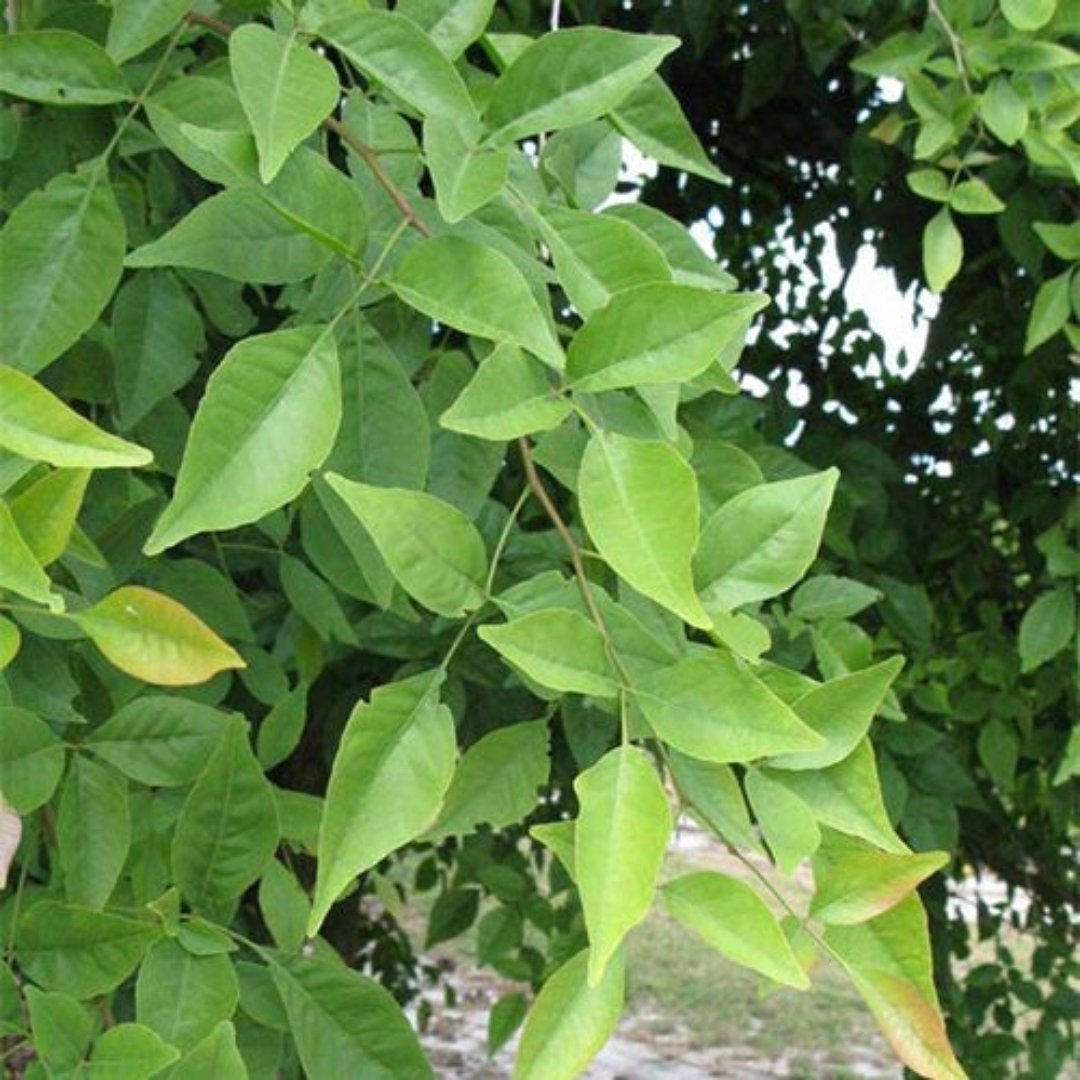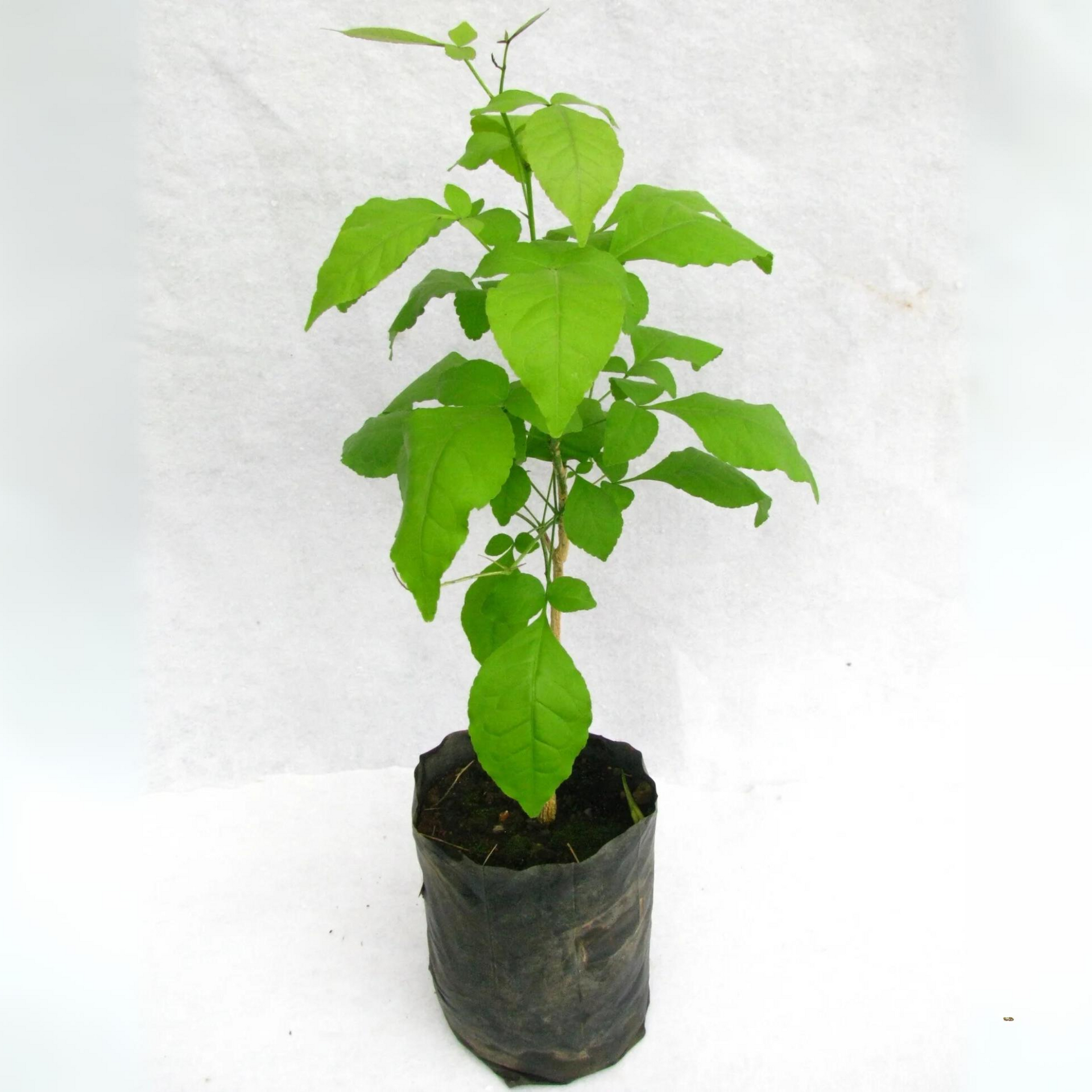

bel patra holy plant Aegle marmelos
Rs. 499.00
Rs. 399.00
Guaranteed Safe Checkout
Green Paradise Offers Bel Patra Plant
About Bel Patra Plant
the Bel Patra plant, also known as Aegle marmelos or Bael, is a sacred and medicinal tree native to India and Southeast Asia. It holds significant cultural and religious importance in Hinduism and is often referred to as the "Bilva" or "Bael" tree in religious texts and practices.
Bel Patra, also known as Bilva or Bael, is a sacred tree in Hindu culture and is commonly grown in India and other tropical regions. It is believed to have religious significance and is used in various rituals and offerings.
Here are some key features and uses of the Bel Patra plant:
Botanical Description:
The Bel Patra tree is a medium-sized, deciduous plant that can grow up to 13-18 meters in height. It has glossy leaves that are trifoliate (divided into three leaflets) and possess a pleasant aroma when crushed. The fruits of the tree are round and woody, about the size of an orange, with a hard shell and soft, aromatic pulp inside.
Religious Significance:
The Bel Patra plant is considered sacred in Hinduism and is often associated with Lord Shiva. The leaves, fruits, and wood of the tree are used in various religious rituals and offerings to Lord Shiva and his consort Parvati. The leaves are believed to represent the three aspects of Lord Shiva: Brahma (the creator), Vishnu (the preserver), and Maheshwara (the destroyer). Offering Bel Patra leaves is considered auspicious and believed to bring blessings and prosperity.
Medicinal Uses:
Various parts of the Bel Patra tree have been used in traditional medicine for centuries. The ripe fruit pulp is rich in essential nutrients like vitamins (especially vitamin C), minerals, and antioxidants. It is believed to have digestive, laxative, and rejuvenating properties. The leaves and roots are also utilized in Ayurvedic medicine to treat various ailments such as diarrhea, dysentery, gastric disorders, respiratory problems, and skin issues.
Culinary Applications:
The ripe fruit is consumed fresh, and its juice is a popular beverage in India, known as "Bel Sherbet" or "Bael juice." The juice is refreshing and has a unique taste, often described as sweet and tangy. In addition to the fruit, Bel Patra leaves are used to flavor traditional dishes and are sometimes added to curries and chutneys.
Conservation:
Due to its cultural and medicinal significance, the Bel Patra tree is protected and valued. However, like many other plant species, it faces threats from habitat destruction and urbanization. Conservation efforts are essential to safeguarding the tree and preserving its traditional uses and values.
Plant Specification:
Height: 20-30cm
Common Name: Bel Patra
Maximum Reachable Height: Up to 10 meters
Here are some of the names for the Bel Patra plant in different languages:
English: Bel Patra, Bael tree, Wood apple tree
Hindi: बेल पत्र (Bel Patra)
Sanskrit: बिल्व (Bilva)
Bengali: বেল পাতা (Bel Pata)
Tamil: வில்வ பத்திரம் (Vilva Pathiram)
Telugu: మారేడు (Maredu)
Kannada: ಬೇಲ ಪತ್ರ (Belapatre)
Malayalam: കൂവളം (Koovalam)
Marathi: बेल पत्र (Bel Patra)
Gujarati: બીળપંન (Bilpan)
Punjabi: ਬੇਲ ਪੱਤਰ (Bel Patar)
Urdu: بیل پتر (Bel Patra)
Nepali: बेलपत्र (Bel Patra)
Assamese: বেলপাত (Bel Pat)
Odia: ବେଲ ପତ୍ର (Bel Patra)
Bel Tree Care
Taking care of a Bel Patra plant involves providing it with the right growing conditions and regular maintenance.
Here are some care tips for a healthy Bel Patra plant:
- Keep the plant in Natural indirect bright Light.
- Poke your finger/plain small stick into the soil to check the moisture.
- Apply 4 cups (Approx. 200 ml) water when topsoil (1-2 inches) in the pot feels dry to touch.
- Do not re-pot it for at least one week after getting it.
Sunlight:
Bel Patra thrives in full sunlight. Place the plant in a spot where it can receive at least 6 to 8 hours of direct sunlight daily.
Watering:
Water the plant regularly, keeping the soil evenly moist but not waterlogged. During the growing season, water it more frequently and reduce watering in the winter months.
Soil:
The plant prefers well-draining soil with a mix of sand, loam, and compost. It grows best on soil that is slightly acidic to neutral in pH.
Temperature:
Bel Patra prefers warm temperatures and cannot tolerate frost. It grows well in temperatures between 20°C to 35°C (68°F to 95°F).
Fertilizer:
Apply a balanced fertilizer during the growing season, typically spring and summer. Follow the manufacturer's instructions for the appropriate dosage and frequency.
Pruning:
Regularly prune the plant to remove dead, diseased, or overgrown branches. This encourages new growth and helps maintain a healthy shape.
Pest and Disease Control:
Keep an eye out for common pests like aphids, mealybugs, and scale insects. If you notice any infestations or diseases, treat them with appropriate insecticides or fungicides.
Repotting:
As the plant grows, it may require repotting every 2-3 years. Choose a slightly larger pot with good drainage when repotting.
Mulching:
Applying a layer of organic mulch around the base of the plant helps retain moisture, suppress weeds, and improve soil fertility.
Religious and Cultural Significance:
If you are growing the Bel Patra plant for religious purposes, it is essential to follow the specific rituals and practices associated with it. In Hindu traditions, Bel Patra leaves are often used in prayers and offerings.
Remember that different growing conditions and climates can affect the plant's care requirements. Observing the plant regularly and adjusting the care accordingly will ensure a healthy and thriving Bel Patra plant.
How To Grow Bel Patra Plant
The Bel Patra plant is easy to grow, and
here's a step-by-step guide on how to do it:
Obtain Bel Patra Seeds or Saplings:
You can either purchase Bel Patra seeds or saplings from a local nursery or collect seeds from a mature fruit of a Bel Patra tree.
Select the Right Location:
Bel Patra prefers a warm and sunny location with well-draining soil. It can also tolerate partial shade but thrives better in full sunlight.
Prepare the Soil:
Bel Patra grows well in a wide range of soil types, but it prefers slightly acidic to alkaline soil. Make sure the soil is well-draining to prevent waterlogging, which can be harmful to the plant.
Planting the Seeds or Saplings:
If planting seeds, sow them in pots or directly in the ground at a depth of about 1 inch. Cover the seeds smoothly with soil and water gently.
If using saplings, dig a hole slightly larger than the root ball and place the sapling inside. Fill the hole with soil and stroke it down gently. Water the sapling after planting.
Watering:
Bel Patra prefers regular watering, especially during dry spells or while the plant is establishing its roots. still, avoid overwatering, as it can lead to root spoilage.
Mulching:
Applying a layer of organic mulch around the base of the plant can help retain moisture, control weed growth, and provide essential nutrients as it decomposes.
Fertilizing:
Bel Patra generally doesn't require frequent fertilization. However, you can apply a balanced organic fertilizer once or twice a year during the growing season to encourage healthy growth.
Pruning:
While young, prune the plant to shape it and remove any dead or unhealthy branches. Once it matures, minimal pruning is needed.
Pest and Disease Control:
Bel Patra is relatively resistant to pests and diseases. However, keep an eye out for common garden pests like aphids, scale insects, or mealybugs, and treat them with organic insecticidal soap or neem oil if necessary.
Harvesting:
The Bel Patra tree takes several years to bear fruit. When the fruits ripen, harvest them and collect the seeds for future plantings.
Religious Significance:
Remember that Bel Patra is considered sacred in Hindu culture. If you're growing it for religious purposes, ensure that you treat the plant with respect and follow appropriate rituals when using its leaves or fruits for religious offerings.
By following these steps, you can successfully grow a Bel Patra plant and enjoy its religious significance and potential health benefits (its fruit is also used in traditional medicine). Happy gardening!






